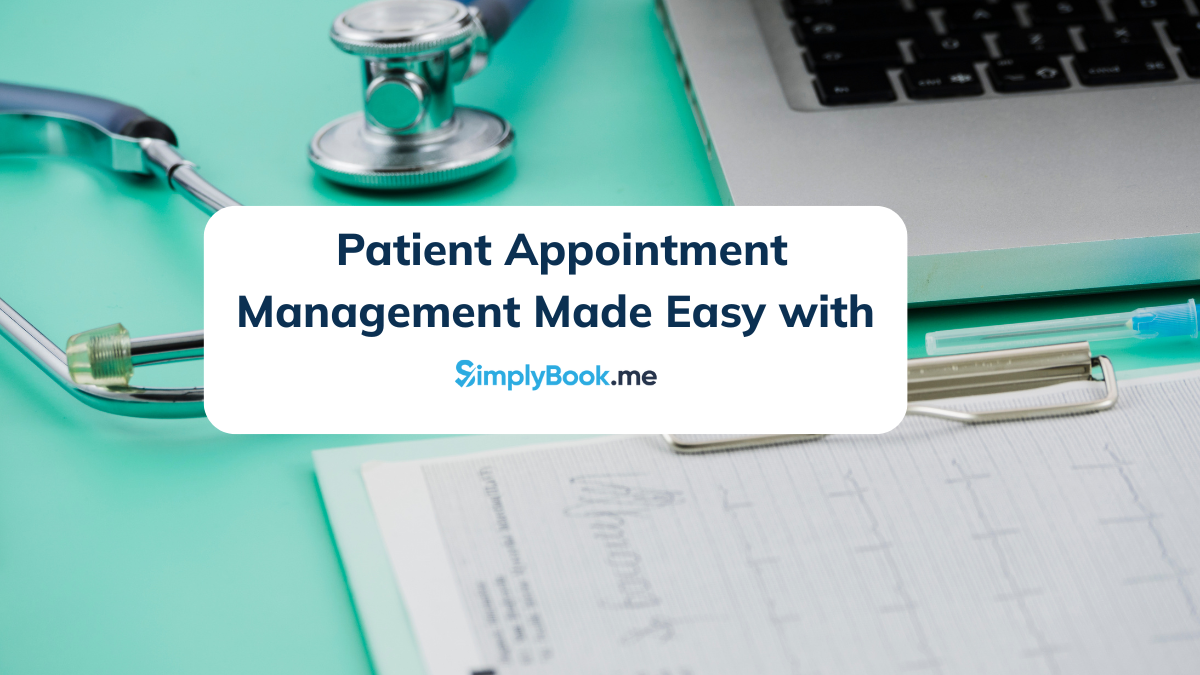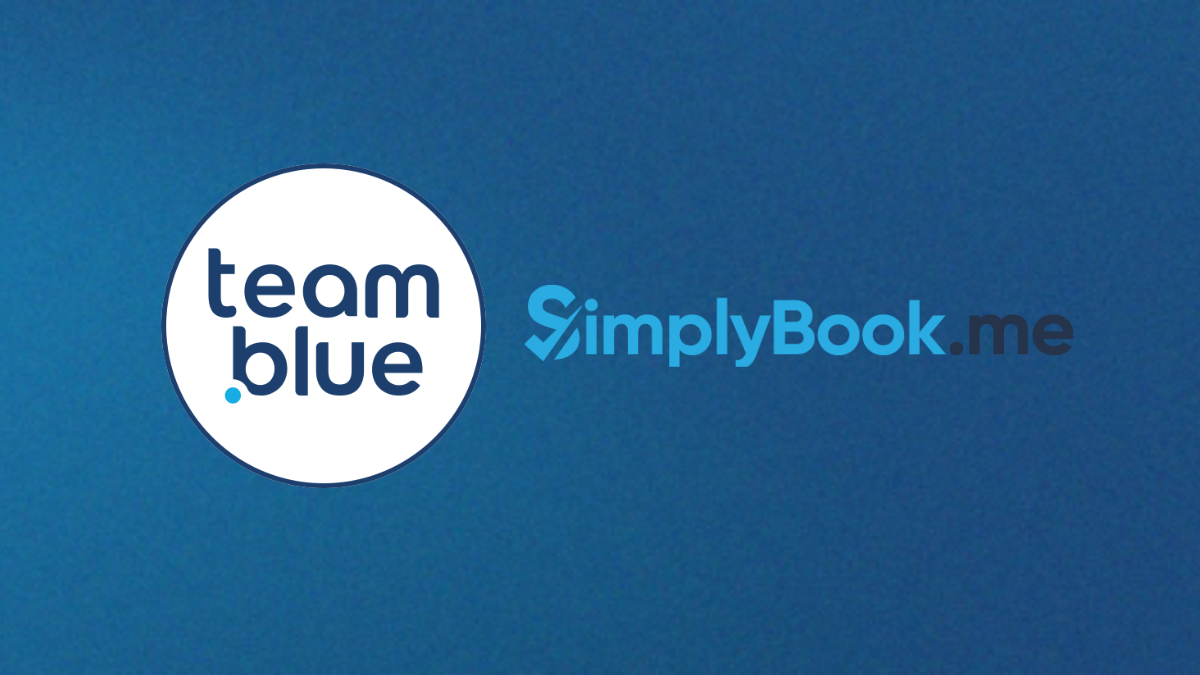Patient Appointment Management Made Easy with SimplyBook.me

This post is also available in:
![]()
![]()
![]()
![]()
![]()
![]()
![]()
![]()
In today’s fast-paced healthcare world, patient appointment management is no longer optional; it’s essential for keeping both patients and providers on track.
Clinics, hospitals, and private practitioners face constant pressure to deliver timely care, reduce administrative overload, and keep patients satisfied.
Yet, many still depend on phone calls, paper calendars, or manual follow-ups, systems that often lead to confusion, double-bookings, or missed visits.
Missed appointments, or “no-shows,” don’t just disrupt the schedule; they create a ripple effect across the entire organization. Staff time goes to waste, equipment and rooms sit unused, and other patients face longer waiting times.
According to a study across 10 clinics, the average no-show rate was 18.8%, with missed appointment costs in 2008 alone totaling $14.58 million for these clinics.
Modern healthcare scheduling software provides a way to address these inefficiencies. By automating reminders, enabling online booking, and streamlining workflows, clinics can reduce no-shows, improve patient satisfaction, and optimize resource utilization.

Why Patient Appointment Management Matters
Inefficient patient appointment management has wide-reaching consequences. Studies show that poorly managed schedules can lead to:
- Longer wait times for patients
- Idle staff and underused medical resources
- Lower patient retention and satisfaction
- Increased administrative burden on clinic staff
Even with reminder systems, many clinics see only modest improvement because reminders are inconsistent, impersonal, or poorly timed.
Effective management requires an integrated approach, combining medical appointment scheduling software with clear policies, patient engagement, and analytics.
What the Data Tells Us About Appointment Inefficiencies
Looking at international studies demonstrates the real-world impact of appointment inefficiencies:
- Turin, Northern Italy (2022–2023): Among 120,405 appointments, the no-show rate was 5.1%, with first-time visits and non-urgent appointments more likely to be missed.
- Academic Otolaryngology Practice (USA): Out of 22,759 scheduled visits, about 20% were no-shows, with new patients and satellite clinics at higher risk.
- Shaare Zedek Medical Center (Israel): Outpatient no-show rates ranged from 10% to 30%, with some primary care departments even higher.
The numbers make one thing clear: effective healthcare booking solutions play a key role in cutting down missed appointments.
Well-designed scheduling systems keep operations efficient and ensure patients receive care without unnecessary delays.

How Healthcare Scheduling Software Improves Patient Appointment Management
1. 24/7 Online Booking
Patients can view available slots and book appointments at any time. With SimplyBook.me, clinics can customize availability, add buffer times, and fill open slots automatically, reducing front desk pressure and missed opportunities.
2. Automated Reminders & Notifications
Many no-shows are due to forgetfulness. Automated SMS or email reminders, including confirmations and two-way options, significantly reduce missed appointments.
3. Custom Intake Forms & Medical Questionnaires
Collecting patient information in advance helps appointments run smoothly. Online forms reduce delays and cancellations from missing details.
4. Telehealth & Virtual Visits Integration
Virtual appointments fill gaps for patients who have mobility, travel, or infection-risk concerns. Integrating telehealth helps clinics optimize their schedules and reduce missed visits.
5. Multi-Location & Multi-Provider Calendar Sync
Clinics with multiple practitioners or locations can stay organized and avoid double-booking. A unified calendar gives staff and providers a clear view of schedules, making patient appointment management smoother and more efficient.
6. Secure Data Handling & Compliance
Patient privacy is critical. Modern medical appointment scheduling software ensures HIPAA and GDPR compliance through secure data storage, encrypted connections, and audit trails.
7. Payments & Deposits
Requiring online deposits for high-risk appointments (new patients, certain treatments) reduces cancellations and ensures revenue recovery.
8. Reports & Analytics
Tracking no-show rates, cancellations, and practitioner performance helps clinics continuously improve their patient appointment management strategies.

Benefits of a Healthcare Booking Solution
Reduced No-Shows & Cancellations
Combining automated reminders, intake forms, and flexible rescheduling leads to a noticeable drop in no-shows. Studies suggest that reminders alone only slightly improve attendance, but a well-rounded patient appointment management system can significantly boost results.
Better Resource Utilization
Clinics can reallocate rooms, equipment, and staff more effectively. Open slots are immediately visible to patients, preventing idle time and lost revenue.
Improved Patient Satisfaction
Patients value convenience and control. The ability to book online, receive reminders, and reschedule as needed improves retention and patient referrals.
Operational Efficiency & Staff Savings
Fewer phone calls, confirmations, and scheduling conflicts free up staff to focus on higher-value tasks, such as patient care and intake.
Analytics Lead to Continuous Improvement
By monitoring appointment patterns, clinics can identify high-risk times, high no-show patient groups, and implement targeted strategies for improvement.
Research Insights: What Real-World Data Reveals
Across numerous studies, one message is clear: effective patient appointment management plays a crucial role in reducing no-shows and improving operational efficiency.
Whether it’s data from Europe, the U.S., or Israel, research consistently shows that combining shorter booking lead times, automated reminders, and flexible scheduling significantly increases appointment attendance.
Clinics using modern healthcare scheduling software are better equipped to fill open time slots, coordinate across departments, and maintain continuity of care.
These findings mirror what many providers experience firsthand: when scheduling tools are integrated into daily workflows, administrative stress goes down, staff productivity goes up, and patients receive care more reliably and on time.
Hypothetical Internal Clinic Example
Clinic A, a dermatology practice, implemented SimplyBook.me with automated SMS reminders, online deposits for new patients, and analytics dashboards. After six months:
- Overall no-show rate dropped from 25% to 12%
- Staff time spent on confirmations fell by 40%
- Patient satisfaction rose from 4.1 to 4.7/5

Addressing Risk Factors in Patient Appointment Management
| Risk Factor | Evidence | Approach with Scheduling Software |
|---|---|---|
| Long lead times | Turin: longer lead times: higher no-show (MDPI) | Limit booking window, send reminders closer to appointment, allow rescheduling |
| First-time patients | Higher no-show risk (PubMed) | Require confirmations, deposits, pre-visit forms |
| Younger patients | Higher missed appointment rates (MDPI) | Mobile-friendly reminders, self-rescheduling options |
| Certain specialties/locations | Pediatrics, dermatology, and neurology have higher no-shows (PubMed) | Specialty-aware scheduling rules, telehealth options |
| Reminder systems alone | Modest reductions unless integrated (BioMed Central, MDPI) | Full-stack approach: booking & reminders & rescheduling & communication |
Realistic Outcomes with a Healthcare Scheduling Solution
- No-show reduction: 30 – 60% depending on baseline
- Staff time saved: Several hours per week on manual tasks
- Revenue recapture: More filled slots, fewer empty appointments
- Improved patient satisfaction: Shorter wait times, easier access
Turning Scheduling into a Patient Experience Advantage
Efficient patient appointment management does more than just reduce no-shows; it shapes how people feel about their care.
When booking is smooth and flexible, patients notice. In fact, one large study showed that offering technology-based scheduling options (like “Fast Pass” slots) not only improved access but cut no-show rates by almost 40% compared to standard appointments.
Modern healthcare scheduling software, such as SimplyBook.me, makes this possible. Features like online booking, dynamic scheduling offers, and reminders tailored to patient preferences can turn a routine appointment into a much more trustworthy experience.
When patients feel their time is respected and that clinics respect it too, loyalty and satisfaction rise.
Over time, medical appointment scheduling software becomes more than just a tool to manage calendars; it becomes part of the clinic’s reputation for reliability, responsiveness, and patient-centered care.
Conclusion:
Efficient patient appointment management is key to providing quality care on time. With the right healthcare scheduling software like SimplyBook.me, clinics can cut down on no-shows, simplify daily routines, boost staff productivity, and make sure every patient gets the care they need exactly when they need it.
Whether you run a multi-specialty clinic, a hospital department, or a solo practice, implementing a flexible medical appointment scheduling software solution can transform the way you manage appointments.
The result? Fewer scheduling headaches, more satisfied patients, and a practice that operates at peak efficiency, all while maintaining the high standards of care your patients expect.
Frequently Asked Questions (FAQ)
1. What is patient appointment management?
Patient appointment management is the process of scheduling, tracking, and coordinating patient visits in healthcare settings. Effective management ensures that appointments run smoothly, reduces no-shows, improves staff efficiency, and enhances patient satisfaction.
2. Why is efficient patient appointment management important?
Efficient scheduling is critical for delivering timely healthcare, minimizing wasted resources, and improving patient outcomes. Poorly managed appointments can lead to long wait times, idle staff, underused equipment, and decreased patient retention.
3. How does healthcare scheduling software improve patient appointment management?
Modern healthcare scheduling software like SimplyBook.me automates key tasks:
- 24/7 online booking for patients
- Automated SMS and email reminders
- Custom intake forms and pre-visit questionnaires
- Telehealth and virtual visit integration
- Multi-provider and multi-location calendar management
- Secure data handling and compliance
- Payment and deposit management
- Reporting and analytics for continuous improvement
These tools reduce administrative workload, lower no-show rates, and optimize resource utilization.
4. What features should clinics look for in medical appointment scheduling software?
Clinics should prioritize:
- Online self-booking with customizable time slots
- Automated reminders and confirmations
- Patient intake and medical history forms
- Multi-location and multi-provider calendar synchronization
- Telehealth integration
- HIPAA/GDPR-compliant secure data storage
- Payment and deposit options
- Analytics dashboards for no-show tracking and workflow improvement
5. How much can no-show rates be reduced with scheduling software?
Studies and real-world examples show that a well-integrated patient appointment management system can reduce no-shows by 30 – 60%, depending on baseline rates and clinic workflow. Features like reminders, online deposits, and flexible rescheduling contribute to these improvements.
6. How does scheduling software benefit staff and clinic operations?
By automating confirmations, reminders, and rescheduling, staff save hours per week on administrative tasks. Fewer phone calls, fewer double-bookings, and clearer schedules allow staff to focus on patient care rather than logistics.
7. Can scheduling software improve patient experience?
Yes. Patients benefit from flexible online booking, timely reminders, and the ability to reschedule appointments easily. Technology-enabled scheduling options, like “Fast Pass” slots, can reduce no-shows by nearly 40% and improve overall patient satisfaction.
8. Is patient data secure when using medical appointment scheduling software?
Reputable platforms like SimplyBook.me ensure compliance with HIPAA, GDPR, and other privacy regulations. Data is stored securely with encrypted connections, audit trails, and controlled access.
9. How can clinics use analytics from scheduling software?
Analytics dashboards help identify:
- Peak no-show times and high-risk patient groups
- Appointment types or providers with frequent cancellations
- Overall scheduling efficiency
This data allows clinics to optimize workflows, adjust appointment policies, and improve patient attendance over time.
10. Can small practices benefit from enterprise-level scheduling software?
Absolutely. Even solo practitioners or small clinics gain from features like automated reminders, online booking, and pre-visit forms. Enterprise scheduling software scales to accommodate multi-location practices while still offering a simple, patient-friendly interface for smaller setups.
References:
Prevalence, predictors, and economic consequences of no-shows, BMC Health Services Research, (BioMed Central)
Understanding No-Show Patterns in Healthcare: A Retrospective Study from Northern Italy (MDPI)
Factors associated with patient no-show rates in an academic otolaryngology practice (PubMed)
Shaare Zedek Medical Center outpatient clinic data (BioMed Central)


Comments
0 commentsNo comments yet